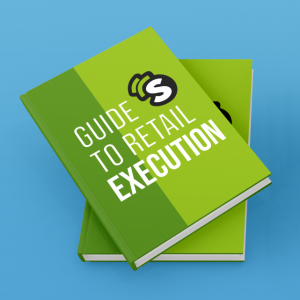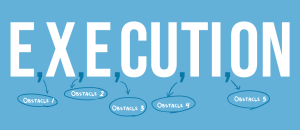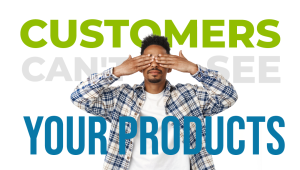SmartSpotter's Guide to Retail Execution
The post-COVID world has brought new challenges to the retail industry. Several recent trends have emerged, shopping behaviors have shifted, and technology is now playing a critical role.
Having said this, SmartSpotter specializes in helping brands identify problems in their retail executions to improve their bottom line and maximize sales. With COVID-19 restrictions off and 2022 now upon us, SmartSpotter's Guide to 2022 Retail Execution shares retail execution mistakes and how to avoid them among FMCG companies.


A brand's retail strategy is only as good as its execution
Although more brands prioritize retail execution, an overwhelming majority cannot hit their goals in the field, undermining their bottom line. We have identified that most companies contend with the same obstacles to retail success.
Obstacle #1
Replenishment of Shelves Not on Time
Empty shelves and unavailability of products are the main obstacles to success in retail execution. In-store products might not be available for purchase for many reasons, but regardless, if they are out of stock, they are unavailable to shoppers.
Stockouts can hurt a business; sales, brand image, and future planning efforts are all damaged.
Therefore, brands must take the necessary measures to ensure their products are on shelves. Unfortunately, staff often fail to restock shelves once they are nearly empty, even when some supplies are still in the storage room.
Retailers should be equipped with a well-established planning and monitoring system that ensures planogram compliance. Additionally, brands must get real-time data from retailers to ensure their products are always on shelves.
Obstacle #2
Your Products do not follow planograms.
It can also happen that although your products are available, they are not where they are supposed to be inside the store.
When the sale depends entirely on the shopper's ability to see the merchandise, in-store placement is critical. Misplaced products can hurt your business and cause walkouts, as shoppers are less likely to see them.
Thus, regularly monitoring the location of products in-store is a must for brand managers.
Obstacle #3
Customers Can't See Your Products
It can also happen that your product is both in stock and well-placed in-store. However, customers can't see it because it is placed incorrectly on the shelf. This can happen because it is located too low or in a "blind spot" and does not follow the agreed planogram.
Enjoying superior shelf positioning where it is easier for shoppers to see and reach is almost as important as ensuring that the product is in stock. This is when planograms play an essential role for retailers, which is a rich source of competitive advantage; awareness of products' on-shelf placement helps keep stores efficient.
Perfect planogram compliance ensures that products are in their proper locations with accurate merchandising and displays following the provided planogram. This will improve the in-store customer experience and help brands analyze and assess SKU performance.

Obstacle #4
Poor Execution
A successful in-store execution strategy improves customer experience. Conversely, poor execution will hold customers back, leading to fewer in-store conversions.
One essential aspect of a good strategy is well-executed in-store marketing; promoting products can be costly. Many companies focus the entirety of their marketing budget on getting people through the door. In-store marketing increases the number of customers who convert, growing a business's bottom line.
However, it is more often than not that shopper marketing isn't executed adequately inside stores.
The following are the main reason that makes activations fail:
Non-Participant
The store doesn't run the promotion at all.
Late Starter
The store runs the promotion but starts late.Early Finisher
The store runs the promotion but finishes early.Incomplete Execution
Not all the SKUs are on the displayNon-Compliant Display
The allocated secondary display either doesn't materialize or is not allocated to the agreed brands over the entire promotion period.Inconsistent/Slow Replenishment
The promotion works well, and the sales rate of relevant products increases, but the store staff doesn't keep up with the ride in demand.
Obstacle #5
Rival brands have a better in-store strategy and execution
Retail is a hyper-competitive environment. Thus, understanding the competitive landscape inside stores is crucial!
Knowing what your competitors offer can help you make your products, services, and marketing stand out.
Take Control of Your Retail Execution
You may have an excellent strategy for your retail success. However, a plan is nothing without perfect execution; that's what drives success for your brand.
Are you having trouble with your execution? SmartSpotter has the ideal platform for brands to overcome the obstacles described in this guide by helping ensure retailer agreements are fulfilled both at initial set-up and throughout a product's in-store presence.
